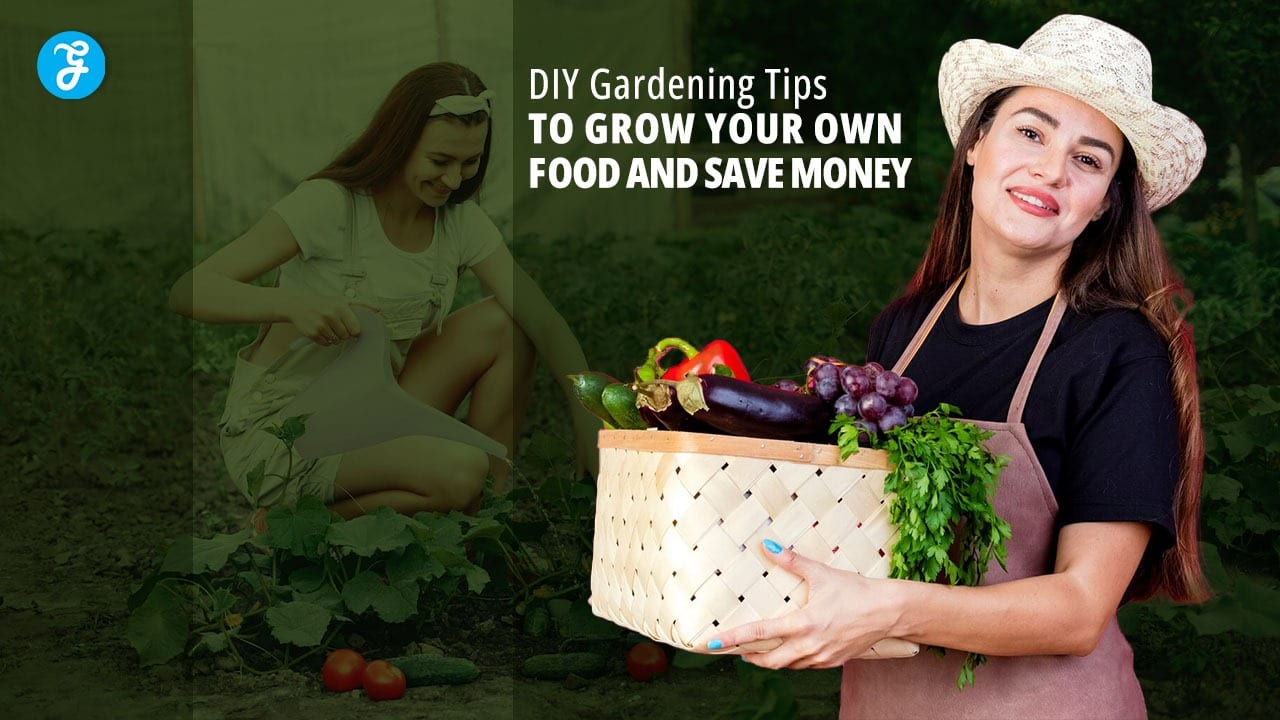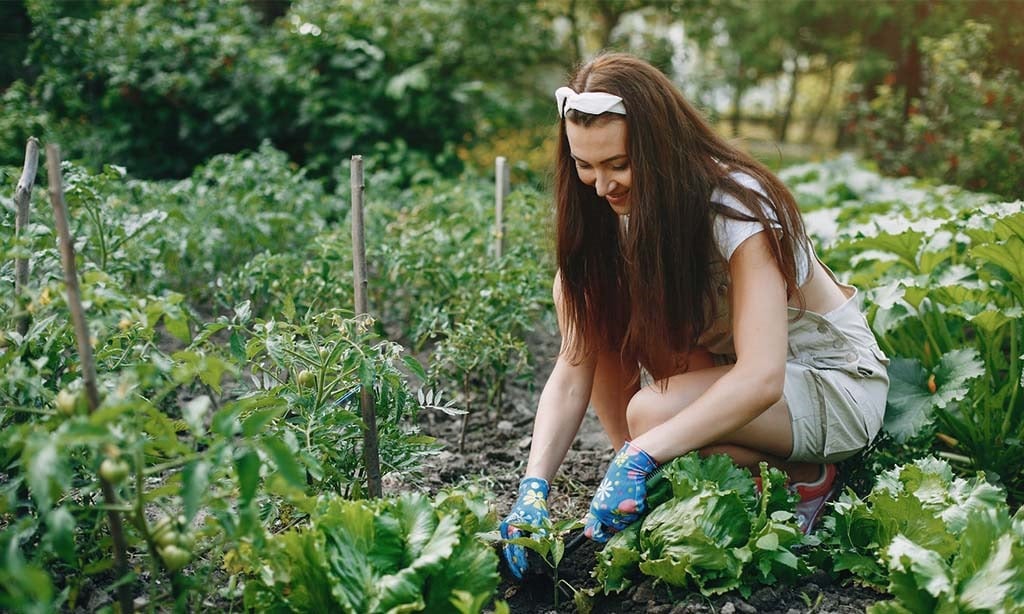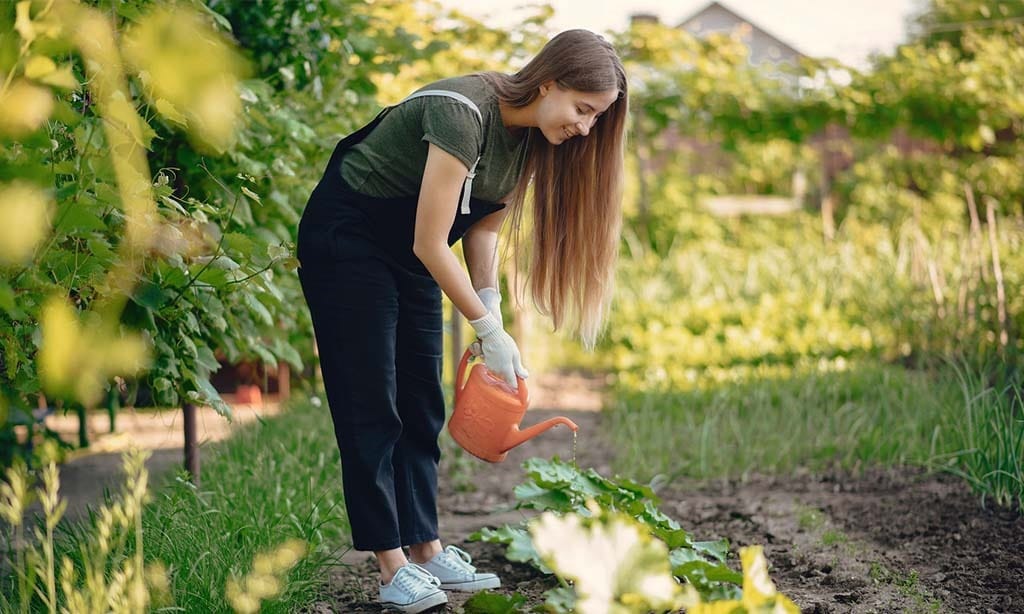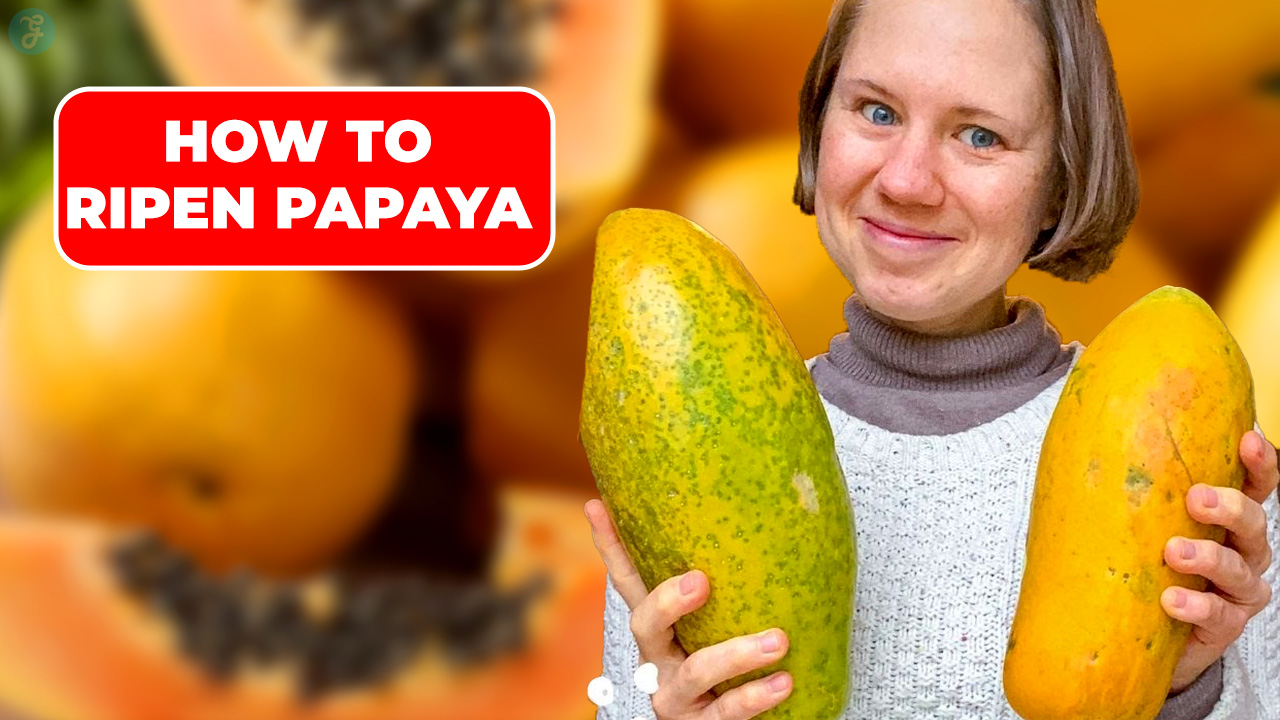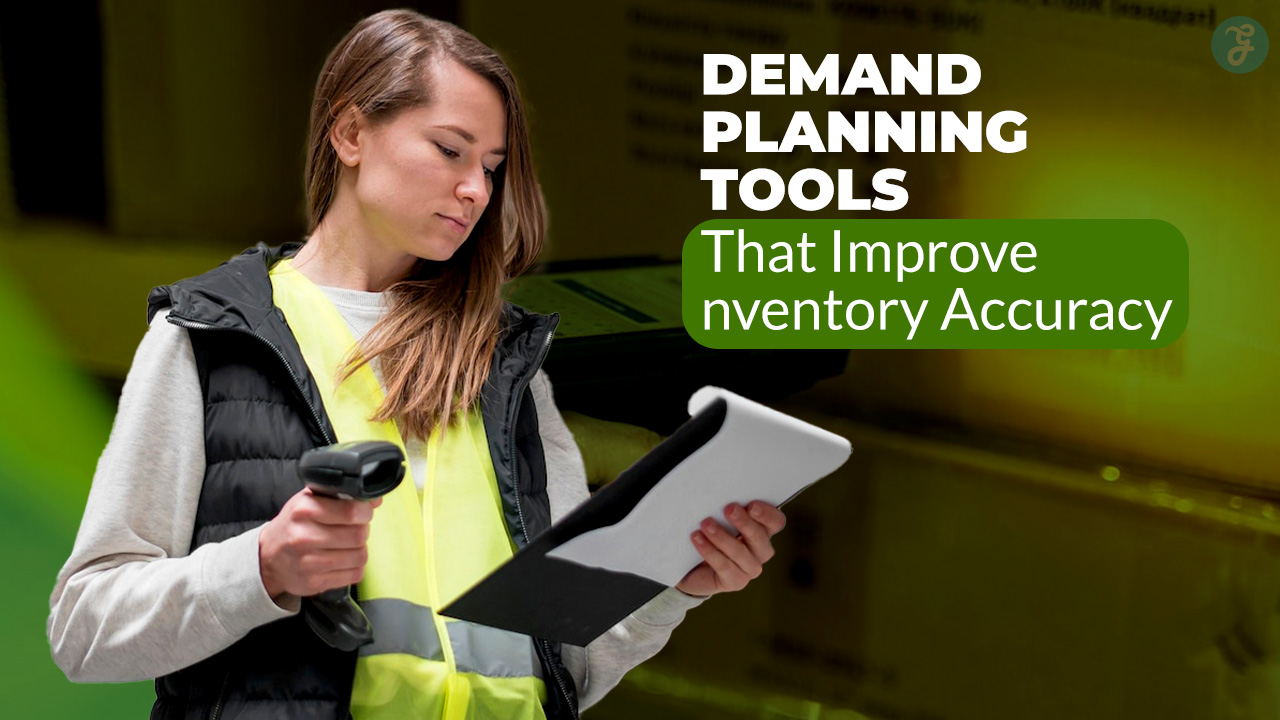In recent years, there has been a growing interest in sustainable living and self-sufficiency, leading many people to explore the benefits of growing their food. The idea of stepping outside to pick fresh vegetables and herbs for your meals is appealing and incredibly rewarding.
Home gardening offers numerous benefits, from saving money on groceries to ensuring you have access to the freshest, most nutritious produce available.
Beyond the practical advantages, gardening provides a deep connection to nature and a fulfilling hobby that people of all ages can enjoy. Whether you have a sprawling backyard or a small apartment balcony, there are countless ways to cultivate your little garden paradise. With the proper knowledge and effort, anyone can transform their space into a productive and beautiful garden.
This guide will introduce you to 35 DIY gardening tips to help you grow your food and save money. From planning your garden layout to harvesting your crops, these tips will equip you with the skills and confidence to embark on your gardening journey.
Whether a novice gardener or an experienced green thumb, these tips will enhance your gardening experience and help you achieve bountiful harvests. Let’s dive in and discover the joys of growing your food!
Planning Your Garden: Laying the Groundwork for Green Success
1. Know Your Zone
First things first: let’s figure out your gardening zone. Think of this as your garden’s zip code – it tells you what plants will thrive in your area based on the climate.
The United States Department of Agriculture (USDA) has divided the country into 13 plant hardiness zones. Each zone represents a 10-degree Fahrenheit range in average annual minimum winter temperature. Knowing your zone is like getting a cheat sheet for what will grow best in your area
Just pop your zip code into the USDA’s Plant Hardiness Zone Map website to find your zone. It’s super easy, and I’ll be a wealth of information about what plants will likely succeed in your area.
For example, if you’re in Zone 5, you know that your average annual minimum winter temperature is between -20°F and -10°F. You can grow cold-hardy plants like apples, pears, and many root vegetables, but you might struggle with heat-loving plants like citrus or avocados.
But don’t worry if you’re in a colder zone – there are still plenty of delicious things you can grow! And if you’re in a warmer zone, well, lucky you – you’ve got a world of options at your green fingertips.
2. Start Small
When starting a garden, remember the story of Goldilocks – you want something that’s “just right.” It’s tempting to want to turn your entire yard into a vegetable paradise right off the bat but trust me, that’s a recipe for being overwhelmed (and possibly a sore back).
Starting small allows you to learn and experiment without feeling like you’ve bitten off more than you can chew. It’s like dipping your toe in the water before diving in headfirst.
So, what’s the right size to start with? A 4×4 foot raised bed, or a few containers are perfect for most beginners. It’s enough space to grow various plants but not so much that it becomes a full-time job.
Let’s break it down:
- A 4×4 foot raised bed gives you 16 square feet of growing space. That’s enough room for about 16 plants, depending on what you’re growing.
- Start with 3-5 large pots if you’re container gardening. You can grow a tomato plant in one, a pepper plant in another, some leafy greens in the third, and some herbs in the others.
Remember, you can continually expand later. It’s much easier (and more fun) to add to a successful small garden than to scale back a too-large one that’s gotten out of hand.
3. Choose the Right Location
Just like in real estate, location is everything in gardening. The right spot can mean the difference between a bountiful harvest and a disappointing yield. So, how do you choose the perfect place for your garden? Let’s break it down:
Sunlight:
Most vegetables need at least 6-8 hours of direct sunlight daily. Some plants, like tomatoes and peppers, will happily soak up even more. To find the sunniest spot in your yard, do a sun survey. Spend a day watching how the sunlight moves across your space. Mark the areas with the most direct sunlight – these are prime real estate for your veggie garden.
Water Access:
Remember, plants get thirsty, especially during hot summer days. You’ll want your garden to be close to a water source. Lugging heavy watering cans across the yard gets old fast. If you can position your garden near an outdoor faucet or rainwater collection system, your future self will thank you.
Soil Quality:
If you’re planting in the ground (as opposed to raised beds or containers), you’ll want to choose a spot with good soil. Look for soil that’s dark, crumbly, and full of worms – these are all signs of healthy soil. If your soil is less than ideal, don’t worry – we’ll discuss how to improve it later.
Protection:
Consider placing your garden where it’s protected from strong winds, which can damage plants. A spot near a fence or building can provide good shelter.
Convenience:
Last but not least, choose a convenient spot for you. You’ll often visit your garden for planting, watering, weeding, and harvesting, so make sure it’s easily accessible. A garden out of sight might end up out of mind, and neglected plants are sad.
4. Plan Your Layout
Now that you’ve chosen your spot, it’s time to plan your layout. This is where you get to play garden architect! Grab a piece of paper and sketch out your garden space. Don’t worry if you’re not an artist – we’re going for a function from here.
Consider these factors when planning your layout:
Plant height:
Put taller plants (like tomatoes or pole beans) on the north side of your garden so they don’t shade shorter plants.
Companion planting:
Some plants grow well together, while others don’t get along. For example, tomatoes love basil (and so do I – hello, Caprese salad!), but they’re not fennel fans.
Accessibility:
Ensure you can reach all your gardens for planting, weeding, and harvesting. In a more extensive garden, consider adding paths between planting areas.
Crop rotation:
If you’re planning for future seasons, consider how to rotate your crops to prevent soil depletion and pest buildup.
One popular method for small spaces is square-foot gardening. This involves dividing your garden into 1-foot squares and planting a specific number of plants in each square based on their size. For example, you might plant 16 carrots in one square but only one tomato plant.
Remember, this is just a starting point. Feel free to adjust based on what you eat and what grows well in your area.
5. Choose Your Plants Wisely
Now for the fun part – choosing what to grow! When gardening to save money, you want to focus on crops that are expensive to buy but easy to grow. But don’t forget about taste – there’s no point in developing a bumper crop of something your family won’t eat.
Here are some great choices for beginners that are also easy on the wallet:
Herbs: Basil, cilantro, parsley, and mint are all easy to grow and expensive to buy fresh.
Lettuce and other leafy greens: These increase and can be harvested multiple times.
Tomatoes: Nothing beats the taste of a homegrown tomato, and they’re much cheaper to grow than buy.
Peppers: Both sweet and hot peppers are relatively easy to grow and can be expensive at the store.
Zucchini: These plants are prolific producers – you might end up with more than you can eat!
Green beans: Whether bush or pole varieties, beans are easy to grow and produce.
When choosing varieties, look for ones well-suited to your climate and resistant to common diseases in your area. Your local cooperative extension office can be an excellent resource for various recommendations.
Preparing Your Garden: Setting the Stage for a Veggie Extravaganza
Alright, green thumb in training; now that we’ve got our plan, it’s time to get our hands dirty! Preparing your garden is like setting the stage for a play – get it right, and your vegetable stars will give an award-winning performance.
6. Test Your Soil
Before you plant anything, you need to get to know your soil. Think of it as CSI: Garden Edition. You’re investigating the scene to determine what your soil needs to support healthy plant life.
You can buy a simple soil testing kit at most garden centers. These kits usually test for pH (how acidic or alkaline your soil is) and the levels of major nutrients like nitrogen, phosphorus, and potassium. They’re pretty easy to use – mix a soil sample with water, add a few drops of the test solution, and compare the color to a chart.
You can send a soil sample to your local cooperative extension office for a more detailed analysis. They’ll give you a full report on your soil’s pH, nutrient levels, organic matter content, and recommendations for improvements.
Most vegetables prefer slightly acidic soil with a pH between 6.0 and 7.0. Add lime to raise the pH if your soil is too acidic (below 6.0). You can add sulfur to lower it if it’s too alkaline (above 7.0).
7. Improve Your Soil
Once you know your soil needs, it’s time to improve it. Think of this as serving your soil a gourmet meal.
Adding organic matter like compost or well-rotted manure is like giving your soil a multivitamin. It improves soil structure, adds nutrients, helps retain moisture, and encourages beneficial microorganisms. It’s the closest thing to magic in the garden world.
Here’s how to add organic matter to your soil:
- Spread a 2-3 inch layer of compost or well-rotted manure over your garden bed.
- Work a garden fork or tiller into the top 6-8 inches of soil.
- If creating a new bed, use the lasagna method: layer organic materials (leaves, grass clippings, compost) right on top of the grass or weeds, cover with cardboard or newspaper, and top with a layer of compost or soil. By planting time, the layers will have broken down into rich, fertile soil.
Aim to add organic matter to your garden bed each year. Your plants will reward you with vigorous growth and bountiful harvests.
8. Build Raised Beds
If you’re dealing with poor soil, limited space, or just want to make gardening easier on your back, raised beds are your new best friend. They’re like the penthouse apartments of the garden world – everything your plants need in a tidy, elevated package.
Raised beds offer several advantages:
Better drainage: Excess water drains away more easily, preventing waterlogged roots.
Warmer soil: The soil in raised beds warms up faster in spring, allowing for earlier planting.
Less compaction: Since you’re not walking on the soil, it stays looser and better aerated.
Easier access: No more bending down to tend your plants. Your back will thank you!
You can build raised beds from a variety of materials:
Wood: Cedar or redwood are naturally rot-resistant. Avoid treated lumber, which can leach chemicals into your soil.
Bricks or concrete blocks are durable and can add a decorative touch.
Galvanized steel: For a modern look that will last for years.
Repurposed materials: Get creative! Old tires, pallets, or kiddie pools can be upcycled into unique raised beds.
To build a basic wooden raised bed:
- Choose a level spot and mark out your bed size.
- Cut your boards to size (4×8 feet is a good size for most gardens).
- Assemble the frame, reinforcing the corners with brackets if needed.
- Place the frame in position and check that it’s level.
- Line the bottom with cardboard to suppress weeds (optional).
- Fill with a mixture of topsoil, compost, and other amendments as needed.
Remember, the soil in raised beds can dry out faster than in ground-level gardens, so you’ll need to water more frequently. But don’t let that scare you off – the benefits far outweigh this small extra effort.
9. Create Paths
Now that you’ve sorted your beds, let’s talk about what goes between them – paths! Creating designated paths in your garden isn’t just about keeping your shoes clean (though that’s a nice bonus). It’s about protecting your soil and making your garden more accessible.
When you walk on garden soil, you compact it. Compacted soil has less air space, which means less room for roots to grow and less space for water to penetrate. By creating paths, you’re giving your plants’ roots the breathing room they need to thrive.
Here are some ideas for creating garden paths:
Mulch: Wood chips or bark mulch make soft, natural-looking paths. They’re inexpensive and easy to replenish.
Gravel: For a more permanent solution, gravel paths drain well and can add a nice crunch underfoot.
Stepping stones: Create a whimsical path with round pavers or repurposed materials like slices of logs.
Grass: If you don’t mind mowing, grass paths can be attractive and cool underfoot.
Whatever material you choose, ensure your paths are wide enough to walk or kneel on while you work comfortably. About 2 feet wide is suitable for most gardens.
10. Set Up a Composting System
How to turn your trash into garden gold. Composting is like alchemy for your garden. It turns kitchen scraps and yard waste into rich, fertile compost that your plants will love.
Here’s why composting is fantastic:
- It reduces waste: Less stuff in the landfill is always good.
- It’s free fertilizer: Why buy plant food when you can make your own?
- It improves soil structure: Compost helps soil retain water and nutrients.
- It’s environmentally friendly: No chemicals, no packaging, just pure garden goodness.
Setting up a compost bin doesn’t have to be complicated. You can buy a ready-made bin from pallets, wire mesh, or just a pile in a corner of your yard.
Here’s the basic recipe for great compost:
- Layer “green” materials (like fruit and vegetable scraps, coffee grounds, and fresh grass clippings) with “brown” materials (like dry leaves, straw, or shredded newspaper).
- Keep the pile moist but not soaking wet – like a wrung-out sponge.
- Turn the pile every few weeks to add air and speed up decomposition.
- In a few months, you’ll have rich, dark compost ready to feed your garden.
What can you compost? Fruit and veggie scraps, eggshells, coffee grounds, tea bags, grass clippings, leaves, and even cardboard can all go in the compost bin.
What should you avoid composting? Keep meat, dairy, oils, and pet waste out of your compost bin. These can attract pests or create unpleasant odors.
Keep a small compost bucket in your kitchen to collect scraps. It’ll make it easy to remember to compost instead of toss!
Planting Your Garden: From Seeds to Sprouts
Now that we’ve set the stage, it’s time for the main event – planting! This is where your garden starts to come to life. So, let’s dig into some tips to ensure your plants get off to a great start!
11. Start from Seeds
Starting plants from seeds is like watching magic happen. It’s also a great way to save money and get access to a broader variety of plants. Plus, there’s something incredibly satisfying about nurturing a plant from its very beginning.
Here’s why starting from seeds is fantastic:
- It’s cheaper: A packet of seeds costs a fraction of what you’d pay for seedlings.
- More variety: Seed catalogs offer more options than your local garden center.
- Control: You know exactly how your plants have been raised from day one.
- It’s fun: Watching seeds sprout and grow is like having a front-row seat to a nature documentary!
Many vegetables can be started indoors 6-8 weeks before the last frost date in your area. This includes tomatoes, peppers, eggplants, and many herbs.
Here’s an essential guide to starting seeds:
- Use a sterile seed starting mix to prevent disease.
- Moisten the mix before planting.
- Plant seeds at the depth recommended on the packet.
- Keep the soil consistently moist but not soggy.
- Provide plenty of light – a sunny windowsill or a simple grow light setup works well.
- Once seedlings have a couple of true leaves, start fertilizing with a weak solution of organic fertilizer.
Remember to “harden off” your seedlings before planting them outside. This means gradually exposing them to outdoor conditions over a week or so. It’s like sending your plant babies to kindergarten – you want to ease them into their new environment!
12. Practice Succession Planting
Succession planting is the secret to having a continuous harvest instead of feast-or-famine. It’s like having a conveyor belt of vegetables out of your garden all season.
Here’s how it works:
Instead of planting all your seeds at once, sow small batches every 2-3 weeks throughout the season. This works exceptionally well for fast-growing crops like lettuce, radishes, and bush beans. You can also succession plant by following one crop with another. For example, plant some summer squash in that space after your spring peas are done.
The benefits of succession planting are huge:
Continuous harvest: No more drowning in zucchini for two weeks and having nothing for the rest of the summer.
Efficient use of space: As one crop finishes, another is ready to take its place.
Reduced pest and disease pressure: Pests and diseases often target specific growth stages, so having plants at different stages can help limit their spread.
Keep a calendar of what you’ve planted and when to make succession planting work. Set reminders for when it’s time to plant the next batch.
13. Try Companion Planting
The idea behind companion planting is that certain plants can benefit each other when grown nearby. These benefits can include:
- Pest control: Some plants repel pests that attack their neighbors.
- Improved growth: Certain plant combinations can enhance each other’s growth.
- Space efficiency: Pairing tall plants with shorter ones maximizes your growing space.
- Improved flavor: Some herbs are said to improve the flavor of nearby vegetables.
Here are some classic companion planting combos:
- Tomatoes and basil: Basil is said to improve the flavor of tomatoes and repel pests.
- Corn, beans, and squash: Known as the “Three Sisters,” this Native American combo is a perfect example of plants helping each other out. The corn supports the beans, the beans fix nitrogen in the soil, and the squash shades the soil and suppresses weeds.
- Carrots and onions: Onions help repel carrot flies.
- Roses and garlic: Garlic can help protect roses from pests and diseases.
On the flip side, some plants just don’t get along. Keep these combos separated:
- Tomatoes and potatoes: They can share diseases.
- Beans and onions: Onions can stunt the growth of beans.
- Cucumbers and potatoes: They compete for nutrients.
Remember, companion planting isn’t an exact science, and results can vary depending on your conditions.
14. Use Vertical Space
Here’s why to use vertical gardening:
- Space-saving: You can grow more in less ground space.
- Better air circulation: This can reduce fungal diseases.
- Easier harvesting: No more bending down to pick your veggies!
- It looks fantastic: A wall of greenery can be a real garden showstopper.
Many vegetables can be trained to grow vertically:
- Pole beans and peas: These natural climbers will happily scramble up any support you give them.
- Cucumbers: Despite their sprawling reputation, cucumbers do great on a trellis.
- Indeterminate tomatoes: These varieties will keep growing taller all season.
- Some squash varieties: Look for varieties labeled as “climbing” or “trailing.”
You don’t need fancy equipment to grow vertically. Here are some DIY trellis ideas:
- Repurpose an old ladder for a rustic look.
- Create a teepee structure with bamboo poles.
- Use cattle panels for a sturdy, long-lasting trellis.
- Hang shoe organizers on a fence for a unique herb garden.
When growing vertically, make sure your structures are sturdy and well-anchored. Plant shade-loving crops like lettuce at the base of your vertical structures.
15. Plant Perennials
While we love our annual vegetables, let’s not forget about the unsung heroes of the edible garden: perennials! These plants come back year after year, saving you time and money in the long run.
Here’s why perennials are fantastic:
- Low maintenance: Once established, they need less care than annuals.
- Early harvest: Many perennials are ready to harvest earlier in the season than annuals.
- Improved soil: Their deep root systems help prevent erosion and improve soil structure over time.
- They’re economical: Plant once, harvest for years!
Some delicious edible perennials to consider:
- Asparagus: It takes a few years to establish, but then you’ll have spring spears for decades.
- Rhubarb: Those tart stalks are the first sign of spring in many gardens.
- Strawberries: Who can resist home-grown berries?
- Artichokes: These architectural plants are beautiful and delicious.
- Herbs: Many herbs like oregano, thyme, and chives come back year after year.
When planting perennials, think long-term. Choose a spot where they can stay undisturbed for years. Prepare the soil well before planting because you won’t work in compost or other amendments once they’re established.
Create a perennial food forest! This garden mimics a natural forest ecosystem, with layers of plants from ground covers to trees, all producing food.
Caring for Your Garden: Nurturing Your Green Babies
16. Water Wisely
Watering might seem simple – just pour some water on the plants, right? But believe it or not, there’s an art to watering. Proper watering is crucial for plant health and can save money on your water bill. Here’s how to become a watering wizard:
Water deeply and less frequently:
This encourages profound root growth, which makes your plants more drought-resistant.
Water at the base of plants:
Avoid getting the leaves wet, which can lead to fungal diseases.
Water in the morning:
This gives plants time to dry before nightfall, reducing disease risk. Plus, less water evaporates in the cooler morning air.
Use mulch:
A layer of organic mulch around your plants helps retain moisture, meaning you’ll need to water less often.
Consider drip irrigation or soaker hoses:
These deliver water directly to the soil, reducing waste and keeping leaves dry.
How do you know if your plants need water? Stick your finger about an inch into the soil. If it’s dry at that depth, it’s time to water.
Remember, different plants have different water needs. Succulents and Mediterranean herbs like it dry, while vegetables generally like consistent moisture.
17. Mulch, Mulch, Mulch
Here’s why you should be mulching everything:
- Conserves moisture: Mulch reduces evaporation, meaning you water less often.
- Suppresses weeds: A thick layer of mulch blocks light, preventing weed seeds from germinating.
- Regulates soil temperature: It keeps soil cooler in summer and warmer in winter.
- Adds nutrients: As organic mulches break down, they feed your soil.
- It looks good: A layer of mulch gives your garden a neat, finished look.
What can you use for mulch?
- Straw or hay (make sure it’s seed-free)
- Leaves (shred them first for best results)
- Grass clippings (as long as they haven’t been treated with herbicides)
- Wood chips or bark
- Compost
- Even newspaper or cardboard can work in a pinch!
To mulch properly, spread a 2-3 inch layer around your plants, keeping it a few inches away from plant stems. This prevents rot and discourages pests from using the mulch as a highway to your plants.
In vegetable gardens, use a light-colored mulch-like straw. Dark mulches can overheat the soil for some veggies.
18. Feed Your Plants
Here are some natural, cost-effective ways to feed your plants:
Use compost:
This is nature’s slow-release fertilizer. Work it into the soil before planting and top-dress around plants during the growing season.
Make compost tea:
This is like a smoothie for your plants. Steep compost in water for a few days, then use the liquid to water your plants. It’s packed with nutrients and beneficial microorganisms.
Plant nitrogen-fixing cover crops:
Crops like clover or alfalfa can be planted off-season to add nitrogen to your soil.
Use fish emulsion or seaweed extract:
These natural fertilizers give plants a quick nutrient boost. They can be a bit smelly.
Rotate your crops:
Different plants use different nutrients. Changing what you grow in each area of your garden each year prevents nutrient depletion.
Remember, the goal is to feed the soil, not just the plants. Healthy soil grows healthy plants that are more resistant to pests and diseases.
19. Manage Pests Naturally
Pests are an inevitable part of gardening, but that doesn’t mean we have to declare all-out chemical warfare. There are plenty of natural ways to keep the nasty bugs at bay while protecting the good ones.
Here are some eco-friendly pest control methods:
- Handpick larger pests: It’s not glamorous but influential. A quick daily patrol to remove caterpillars, beetles, and other visible pests can prevent much damage.
- Use row covers: These light fabric covers let in sun and water but keep out flying insects.
- Encourage beneficial insects: Ladybugs, lacewings, and praying mantises are your garden’s tiny defenders. Plant flowers like marigolds, cosmos, and yarrows to attract these helpful bugs.
- Make a natural pest spray: Mix water with dish soap and neem oil. This combo can deter many common pests. It’s like aromatherapy for your plants – pleasant for them, not so much for the bugs.
- Companion planting for pest control: Some plants naturally repel certain pests. For example, plant basil near tomatoes to deter tomato hornworms or marigolds throughout the garden to repel various pests.
- Diatomaceous earth: This powder from fossilized algae has microscopic sharp edges that deter soft-bodied pests like slugs and snails. It’s like setting up a tiny obstacle course for pests.
20. Prune and Support
Proper pruning and support can make a big difference in plant health and yield.
Here’s why pruning and support matter:
- Improved air circulation reduces the risk of fungal diseases
- Better light penetration leads to more even ripening
- Directing plant energy can increase fruit production
- Support prevents plants from sprawling and keeps fruit off the ground.
Let’s look at some specific pruning and support techniques:
- Tomatoes: Pinch off suckers (the shoots that grow between the main stem and branches) on indeterminate varieties. This directs energy to fruit production. Stake or cage tomatoes to keep them off the ground.
- Cucumbers: When grown vertically, remove the first 4-5 side shoots to encourage the main vine to reach the top of the support. After that, pinch off the growing tip to encourage bushier growth.
- Basil and other herbs: Regularly pinch off the top sets of leaves to encourage bushier growth and prevent flowering.
- Peas and pole beans: Provide a trellis or poles for these natural climbers.
- Squash and melons: While these often sprawl, you can train them vertically with sturdy support. For heavy fruits like melons, create little hammocks with old t-shirts or nylon stockings to support the fruit as it grows.
Remember to use clean, sharp tools when pruning to prevent the spreading of diseases. And don’t be afraid to prune – most plants respond well.
21. Rotate Your Crops:
Crop rotation might sound like something only big farms do, but it’s just as crucial in your backyard garden.
Here’s why crop rotation is fantastic:
- Prevents nutrient depletion: Different plants use different nutrients. Rotating crops prevents any one nutrient from being overused.
- Reduces pest and disease problems: Many pests and diseases are specific to certain plant families. Rotating crops disrupts their life cycles.
- Improves soil structure: Different root systems affect the soil differently.
Here’s a simple 4-year rotation plan:
- Year 1: Leaf crops (lettuce, spinach, kale)
- Year 2: Fruit crops (tomatoes, peppers, eggplant)
- Year 3: Root crops (carrots, beets, onions)
- Year 4: Legumes (beans, peas)
If you’re short on space, you can practice crop rotation in containers. Change the soil or amend it heavily between plantings of different crop families.
22. Extend Your Growing Season
You can extend your harvest well into fall or even winter with a few tricks.
Here are some ways to stretch your growing season:
– Use cold frames like mini-greenhouses that protect plants from frost. You can buy them or do a DIY with old Wmini greenhouses, protecting a tunnel over your garden bed with PVC pipes and covering it with plastic.
- Plant cold-hardy varieties: Some veggies, like kale, carrots, and Brussels sprouts, can survive (and even taste better after) a frost.
- Use season extenders: Cloches, wall-o-waters, and row covers can protect individual plants or rows from cold.
- Mulch heavily: A thick layer of mulch can keep plant roots warm even when air temperatures drop.
- Try indoor gardening: Bring herbs and salad greens indoors to a sunny windowsill for fresh greens all winter.
Extending your season allows you to enjoy home-grown produce longer and save even more money.
23. Save Seeds
Saving seeds is like creating a time capsule for your garden. It’s a way to preserve your best-performing plants, save money on next year’s garden, and develop varieties suited to your specific growing conditions.
Here’s why seed saving is fantastic:
- It’s economical: Free seeds for next year!
- You can select for traits you like: Choose seeds from your healthiest, tastiest plants.
- It connects you to the entire life cycle of your plants.
- You can share or trade seeds with other gardeners.
Some easy vegetables for seed saving include:
- Tomatoes: Let a few fruits fully ripen on the vine, then scoop out the seeds and ferment them in water for a few days before drying.
- Peppers: Let peppers fully ripen (usually turning red), then remove and dry the seeds.
- Beans and peas: Let the pods dry on the plant until brown and rattling, then shell them.
- Lettuce: Let a few plants bolt and go to seed. Collect the seeds when they’re fluffy and dry.
Only save seeds from open-pollinated varieties, not hybrids. Hybrid seeds won’t produce plants true to the parent.
Store your dried seeds in paper envelopes or glass jars in a cool, dry place. Label them with the variety and date.
24. Practice Sustainable Watering
In many areas, water is a precious resource. Using it wisely in your garden is good for the environment and your wallet. Here are some tips for sustainable watering:
- Collect rainwater: Use rain barrels or cisterns to collect rainwater from your roof.
- Water deeply but less frequently: Thourages profound root growth, making plants more drought-resistant.
- Use drip irrigation or soaker hoses: These deliver water directly to plant roots, reducing waste.
- Water in the morning: Less water will evaporate in the cooler morning air.
- Mulch: A layer of mulch reduces evaporation from the soil surface.
- Choose drought-tolerant plants: Many native plants and Mediterranean herbs are naturally adapted to use less water.
- Group plants with similar water needs: This prevents overwatering some plants while underwatering others.
Remember, most plants prefer deep, infrequent watering over frequent, shallow watering.
25. Create a Pollinator Paradise
Pollinators are the unsung heroes of the garden world. Without them, many of our favorite fruits and vegetables wouldn’t exist. Creating a pollinator-friendly garden isn’t just good for your veggie yield – it’s great for the ecosystem, too!
Here’s how to roll out the red carpet for pollinators:
- Plant flowers: Bees, butterflies, and other pollinators love flowers. Plant a variety that blooms at different times to provide food throughout the season.
- Avoid pesticides: Many pesticides are harmful to beneficial insects. Use natural pest control methods instead.
- Provide water: A shallow dish with pebbles for landing spots makes a perfect pollinator watering hole.
- Leave some bare soil: Many native bees nest in the ground and need access to bare soil.
- Plant native species: Native plants are adapted to your local climate and are often the best food sources for native pollinators.
- Provide shelter: Leave some areas of your garden a bit wild. Deadwood and leaf litter make great homes for many beneficial insects.
Some great pollinator-friendly plants include:
- Sunflowers
- Zinnias
- Lavender
- Bee balm
- Coneflowers
- Herbs like basil, thyme, and oregano (bonus: you can eat these too!)
By creating a pollinator paradise, you’re not just helping your garden but supporting the entire ecosystem.
Harvesting and Preserving: Reaping the Rewards
26. Harvest at the Right Time
Knowing when to harvest your vegetables is like Goldilocks – you want to get it right. It’s too early, and you might miss flavor and nutrients. Too late, and you could end up with harsh, bitter, or overripe produce. Here are some general guidelines for common vegetables:
- Tomatoes: Harvest when they’re fully colored but still firm to the touch. They should give slightly when gently squeezed.
- Peppers: can be harvested when green or allowed to ripen to red, yellow, or orange (depending on the variety). The longer they ripen, the sweeter they’ll be.
- Cucumbers: Pick them when they’re still young and tender. Overripe cucumbers become bitter and seedy.
- Zucchini and summer squash: Harvest when they’re 6-8 inches long. Smaller squash are more tender and flavorful.
- Leafy greens: Pick the outer leaves when they’re young and tender. This allows the plant to continue producing.
- Root vegetables: Most are ready when the tops of the vegetables are visible above the soil line.
- Herbs: Harvest in the morning after the dew has dried but before the day heats up. This is when their essential oils are most concentrated.
Remember, the best way to learn is through experience. Don’t be afraid to taste-test as you go – it’s one of the perks of having your garden!
27. Use Proper Harvesting Techniques
How you harvest can be just as important as when you harvest. Proper techniques can prevent plant damage and ensure your produce stays fresh longer. Here are some tips:
- Use clean, sharp tools: This prevents plant damage and reduces the risk of spreading diseases.
- Cut, don’t pull: For most vegetables, it’s better to cut them off with scissors or pruners rather than pulling. This is gentler on the plant.
- Harvest when plants are dry: Wet plants are more susceptible to damage and disease spread.
- Be gentle: Handle your produce carefully to avoid bruising or damaging it.
- Harvest frequently: Regular harvesting encourages many plants to produce more.
28. Store Your Harvest Properly
You’ve grown it, harvested it, and now let’s ensure it stays fresh as long as possible. Different types of produce have different storage needs:
- Root vegetables (carrots, beets, and potatoes): Store in a cool, dark, dry place. A root cellar is ideal, but a dark basement corner can work, too.
- Leafy greens: Wash and dry thoroughly, and store in a plastic bag with a damp paper towel in the refrigerator.
- Tomatoes: Store at room temperature, away from direct sunlight. Only refrigerate if they’re getting overripe.
- Herbs: Store upright in a glass of water like a bouquet, with a plastic bag loosely covering the leaves. Most herbs will keep in the refrigerator this way for about a week.
- Onions and garlic: Store in a cool, dry, dark place with good air circulation. Don’t store in plastic bags, as this can promote rot.
29. Preserve Your Harvest
Even the most devoted veggie eater can have trouble keeping up with a productive garden at its peak. That’s where preserving comes in. By preserving your harvest, you can enjoy the fruits (and veggies) of your labor all year round. Here are some preservation methods to try:
- Freezing: One of the easiest preservation methods. Most vegetables can be frozen but must be blanched first to preserve color and nutrients.
- Canning: Great for tomatoes, pickles, jams, and other fruits and vegetables. Always follow tested recipes and proper canning procedures for safety.
- Drying: Perfect for herbs, some s, and vegetables like tomatoes. You can use a food dehydrator or your oven on its lowest setting.
- Fermentation: Think sauerkraut, kimchi, or pickles. Fermentation not only preserves food but can make it more nutritious.
30. Share the Bounty
Sometimes, despite our best efforts at succession planting and preservation, we end up with more produce than we can use. Don’t let it go to waste! Here are some ideas for sharing your garden’s abundance:
- Donate to local food banks or community kitchens. Many are happy to receive fresh produce.
- Set up a free veggie stand in front of your house.
- Organize a produce swap with other gardeners. Trade your excess zucchini for someone else’s extra tomatoes.
- Host a canning or preserving party. Invite friends over to help process the harvest and share the results.
- Give veggie bouquets as gifts. A bunch of fresh herbs or colorful cherry tomatoes can make a unique and appreciated gift.
31. Keep a Garden Journal
A garden journal is like a diary for your garden. It’s a place to record what you planted, when, how it grew, and any challenges you faced. Here’s why keeping a garden journal is a game-changer:
- Track your successes and failures: Know what worked well and what didn’t so you can improve next year.
- Plan crop rotation: Easily remember what was planted where in previous years.
- Monitor pest and disease issues: Spot patterns and address problems early.
- Record weather patterns: Understand how weather affects your garden.
- Save money: By knowing what grows well, you can avoid wasting money on plants that don’t thrive in your garden.
Your journal doesn’t have to be fancy. A simple notebook will do, or you can use a garden planning app if you prefer digital. The important thing is to make regular entries throughout the growing season.
32. Extend Your Growing Season
Who says the growing season has to end when the weather turns cold? With a few tricks up your sleeve, you can extend your harvest well into fall or even winter:
- Use cold frames: These are like houses that protect plants from frost. You can buy them or do a DIY with old windows
- Try hoop houses: Create a tunnel over your garden bed with PVC pipes and cover with plastic. It’s like a cozy blanket for your plants.
- Plant cold-hardy varieties: Some veggies, like kale, carrots, and Brussels sprouts, can survive (and even taste better after) a frost.
- Use season extenders: Cloches, wall-o-waters, and row covers can protect individual plants or rows from cold.
- Mulch heavily: A thick layer of mulch can keep plant roots warm even when air temperatures drop.
Extending your season allows you to enjoy home-grown produce longer and save even more money.
33. Try Vertical Gardening
If you’re short on space or want to add visual interest to your garden, it’s time to think vertically! Growing up instead of out is a great way to maximize your growing area. Here’s why vertical gardening rocks:
- Space-saving: You can grow more in less ground space.
- Better air circulation: This can reduce fungal diseases.
- Easier harvesting: No more bending down to pick your veggies!
- It looks fantastic: A wall of greenery can be a real garden showstopper.
Many vegetables can be trained to grow vertically:
- Pole beans and peas: These natural climbers will happily scramble up any support you give them.
- Cucumbers: Despite their sprawling reputation, cucumbers do great on a trellis.
- Indeterminate tomatoes: These varieties will keep growing taller all season.
- Some squash varieties: Look for varieties labeled as “climbing” or “trailing.”
You don’t need fancy equipment to grow vertically. Old ladders, repurposed pallets, or string grids can make significant vertical gardening structures.
34. Practice Companion Planting
Companion planting is like playing matchmaker in your garden. It’s all about figuring out which plants grow well together and which ones… well, let’s say some plants are better off as distant neighbors.
Here are some classic companion planting combos:
Tomatoes and basil: Basil is said to improve the flavor of tomatoes and repel pests.
- Corn, beans, and squash: Known as the “Three Sisters,” this Native American combo is a perfect example of plants helping each other out. The corn supports the beans, the beans fix nitrogen in the soil, and the squash shades the soil and suppresses weeds.
- Carrots and onions: Onions help repel carrot flies.
- Roses and garlic: Garlic can help protect roses from pests and diseases.
- On the flip side, some plants just don’t get along. Keep these combos separated:
- Tomatoes and potatoes can share diseases.
- Beans and onions: Onions can stunt the growth of beans.
- Cucumbers and potatoes compete for nutrients.
Remember, companion planting isn’t an exact science, and results can vary depending on your conditions.
35. Embrace Imperfection
Those oddly shaped tomatoes, the slightly nibbled lettuce leaves, and the carrots that grew into each other are all signs of real, natural, homegrown food. They prove that your produce hasn’t been genetically modified for uniformity or sprayed with chemicals to achieve an unnaturally perfect appearance. Here’s why embracing imperfection is essential:
- It reduces waste: When you grow your food, you’re less likely to toss out “ugly” produce because you know the love and effort that went into developing it.
- It connects you to nature: Imperfect produce reminds us that nature isn’t uniform or predictable – and that’s part of its beauty.
- It can be more nutritious: Sometimes, those little imperfections are signs of higher nutrient content. For example, apples with slight scabs often have more antioxidants.
- It tastes better: Homegrown produce is picked at peak ripeness, so even if it’s not picture-perfect, it often tastes far better than store-bought.
- It’s a learning experience: Each “imperfection” is a chance to learn about your garden’s ecosystem and how to improve your growing practices.
So don’t see it as a failure the next time you pull a forked carrot or a curly cucumber from your garden. See it as a unique, home-grown masterpiece. After all, perfection is boring – it’s the quirks that make life (and vegetables) interesting!
Final thoughts
Growing your food is more than just a way to save money; it’s a journey that reconnects you with nature, promotes sustainable living, and offers a profound sense of accomplishment. By following these 35 DIY gardening tips, you can transform any space, big or small, into a thriving garden that provides fresh, healthy produce for you and your family.
As you nurture your plants from seedlings to harvest, you’ll develop a deeper appreciation for the food on your plate and the effort it takes to grow it. You’ll also find that gardening can be a therapeutic and relaxing activity, offering a welcome escape from the hustle and bustle of daily life.
By cultivating your garden, you’re positively impacting your health and wallet and contributing to a more sustainable and environmentally friendly world.


